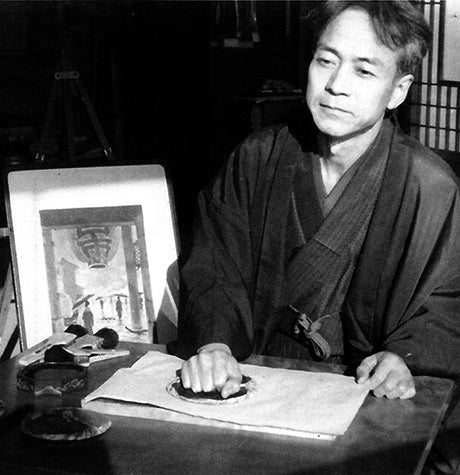Shiro Kasamatsu (1898-1992)
Shiro Kasamatsu was a notable Japanese woodblock print artist, born on January 11, 1898, in Tokyo, Japan. Trained in both shin hanga and sōsaku hanga styles, he initially apprenticed at the young age of 13 under Kaburagi Kiyokata, a master of bijin-ga—the traditional art of depicting beautiful women. Despite this initial training, Kasamatsu's primary interest lay in landscape art. He adopted the pseudonym 'Shiro,' given by his teacher, which he used as his signature on his prints. In 1919, Kasamatsu began making woodblock prints for the publisher Shōzaburō Watanabe. However, the Great Kanto Earthquake of 1923 destroyed almost all the woodblocks in a fire at Watanabe's print shop, a significant setback that led to the loss of many original prints.
Despite these early challenges, Kasamatsu continued to develop and evolve his craft, transitioning in the 1950s to work with the Kyoto-based publisher Unsodo. During this period, he produced nearly 102 prints, demonstrating a prolific output that contributed significantly to the post-war revival of interest in traditional Japanese printmaking. In the later stages of his career, from 1955 to 1965, Kasamatsu embraced the sōsaku hanga movement, which emphasised the artist's involvement in every step of the printmaking process. He created nearly 80 prints in this style, where he not only designed but also carved and printed his works. Shiro Kasamatsu's dedication to the art form and his ability to adapt to new styles and challenges marked him as a significant figure in the world of Japanese art until his passing on June 14, 1991.

Portrait of the artist Shiro Kasamatsu

Signature of the artist Shiro Kasamatsu

